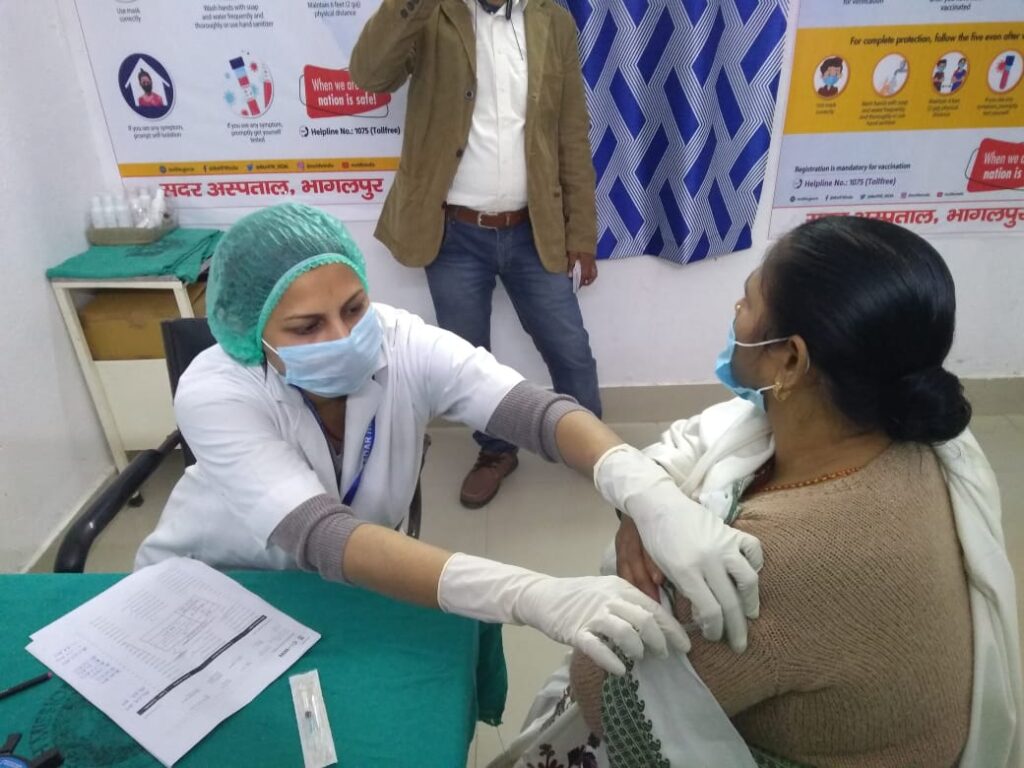Union finance minister Nirmala Sitharaman presents the 2021-2022 budget tomorrow, looked forward to by most at a time when the economy is in dire need of a kickstart after the pandemic year. But did you know that Rs 1,421.33 billion, or 5.78 per cent of the revised estimates in the 2018-2019 budget — — remained unspent?
Most of them had been earmarked for social welfare schemes. This had a ripple effect on the 2019-2020 budget too. This, at a time when India lags behind in achieving the United Nations’ sustainable development goals (SDGs).
The budget document presented in February last year for the fiscal 2020-2021 provides details of the real expenditure of various Union ministries and departments during the fiscal year 2018-2019. As per this, various ministries and departments spent a total of Rs 23,151.12 billion as against the allocation of Rs 24,422.13 billion in the budget estimates submitted in February 2018. Incidentally, this estimated amount was revised to Rs 24,572.35 billion.
The expenditure and revenue given in the budget estimates are reviewed after the completion of the first half of the financial year. The changes in the budget estimates based on the first half’s expenditure and revenue are called revised estimates.
Thus, various ministries and departments of the central government did not spend 5.78 per cent — Rs 1,421.33 billion — of the revised estimate. Placing it in context, this is almost double the proposed amount for health expenditure (Rs 650 billion) in the union budget for the fiscal 2020-2021.

Budget cuts in social welfare schemes
For the financial year 2018-2019, Rs 3,055.17 billion was proposed for Union government-sponsored schemes like MGNREGA (Mahatma Gandhi National Rural Employment Guarantee Act). This was reduced to Rs 3,048.49 billion in the revised estimates. However, the actual expenditure was only Rs 2,960.29 billion, 2.9% less than the revised estimate.
In the financial year 2018-2019, Rs 2,126.14 billion was spent on core schemes of the central government focussing on national development, as against Rs 2,278.26 billion allocated under the budget estimate, and the reduced revised estimate of Rs. 2,204.88 billion — a gap of Rs 78.73 billion over the revised estimate.
This reduction in expenditure during the financial year 2018-2019 had a major impact on the ministries and departments responsible for running social welfare schemes. Let’s take a look at the affected sectors.
Food and Public Distribution
The department of food and public distribution is responsible for providing ration to people living below the poverty line. The department was allocated an amount of Rs 1,740.45 billion under the 2018-2019 budget, which was revised to Rs 1,766.46 billion. Of this, only Rs 1,070.78 billion was spent, a gap of Rs 695.68 billion over the revised estimate.
In the next fiscal 2019-2020, the department’s allocation was further trimmed to Rs 1,922.40 billion, which was later revised to Rs 1,152.4 billion. The budget for the fiscal 2020-2021 also proposed a sum of Rs 1,222.35 billion, less than the 2018-2019 budget originally allocated for this department.
Thus, for the last three years, the department responsible for the public distribution system to feed the poor and the hungry has been facing cuts in its budget.

Meanwhile, as per the Global Hunger Index 2020 report, India is placed at 94th position among 107 countries, much behind Bangladesh, Pakistan and Nepal. The global hunger index is based on the proportion of undernourished as a percentage of the population, proportion of severely wasted and stunted children under the age of five, and the mortality rate of children under five.) The Global Hunger Index measures hunger on a 100-point scale, with 0 being the best score (no hunger) and 100 being the worst.
Malnutrition among kids is also a serious concern in the country. According to the recently released National Family Health Survey-5, 16 states recorded an increase in underweight and severely wasted under-5 children among 22 states that were surveyed during the first phase of the report. Similarly, 13 surveyed states have registered a surge in the percentage of stunted children under five years of age in comparison to NFHS 4 (2015-16).
Ministry of Women and Child Development
The Union ministry of women and child development was allocated Rs 247 billion in fiscal 2018-2019, revised to Rs 247.59 billion. However, it spent less than the original allocation — Rs 230.26 billion.
A NITI Aayog report on sustainable development goals (SDGs) in 2019 states that 21.92 per cent of the country’s population is below the poverty line. It is expected this number will only increase due to the COVID-19 pandemic.
The report mentions that only 36.4 per cent of pregnant women in the country have access to maternity schemes, 34.7 per cent of children under the age of five and 33.4 per cent of children up to the age of four are underweight, and 40.5 per cent of children aged six to 59 months and more than half (50.3 per cent) of females aged 15 to 49 years old are anaemic.

As per the NITI Aayog report, the average hunger score of the country is 35 of 100. These scores are given by the Aayog to states on the basis of their performances. The country’s average is calculated on the basis of these scores.
Out of the 36 states and union territories in the country, 23 have scored less than 50, or are in the red mark. In major states such as Uttar Pradesh and Bihar, where 24 per cent of the country’s population lives, the hunger scores are 31 and 26, respectively.
Daman and Diu fared the worst in this regard, scoring 12 out of 100.
Education
The department of school education and adult literacy is responsible for school education and adult education. The department was allocated Rs 500 billion for fiscal 2018-2019, revised to Rs 501.14 billion. The spend? Rs 484.4 billion, Rs 16.73 billion lesser than the revised estimate.
The department of higher education was allocated Rs 350.1 billion in the 2018-2019 budget, revised to Rs. 335.12 billion. It spent lesser than both — Rs 319.04 billion.
Although India’s education score in terms of sustainable development goals (SDGs) was slightly better than the average 58, eight states and union territories scored below average. These include the two major states of Uttar Pradesh and Bihar, which scored 48 and 19, respectively.
Health
The ministry of health and family welfare was allocated Rs 528 billion (2.28 per cent) in the 2018-2019, revised to Rs 543.03 billion. The total spend was higher than the original, but Rs 13.5 billion lesser than revised — Rs 529.53 billion.
The average sustainable development goals score of the country in terms of health was 61, but still four states of the country have fallen short — these include Uttar Pradesh and Bihar, with scores of 34 and 44, respectively.

Drinking water
The department of drinking water and sanitation was allocated Rs 223.6 billion for the year 2018-2019, revised to Rs 199.93 billion. The spend was Rs 184.12 billion, lower than both.
Meanwhile, a 2018 report by WaterAid India pointed out how nearly 163.1 million people lack access to clean water close to their homes in India. Habitations affected by high arsenic in their groundwater are also in the rise in the country. From 1,800 arsenic-affected habitations in 2015, the numbers have jumped to 4,421 as on September 17, 2020, according to a reply given to Lok Sabha by Rattan Lal Kataria, minister of state, Jal Shakti (water) ministry.
However, as per the NITI Aayog’s score card, the overall sustainable development goals performance of the country except Delhi, in this case, has been better — the average score of the country is 88, but much remains to be done to achieve the target of 100.
Agriculture and Farmers’ Welfare
A sum of Rs 467 billion was allocated to the department of agricultural cooperatives and farmers’ welfare in 2018-2019, revised significantly to Rs 678 billion. The spend was Rs 460.76 billion, lower than both budget allocation and the revised estimate.
In recent years, such a major gap in allocation and expenditure was only seen in 2014-2015, when out of the Rs 17,948.92 billion allocated to various ministries and departments, only Rs. 16,636.73 billion was spent — funds worth Rs 1,312.19 billion (7.31 per cent) lay idle.
Read the story in Hindi here
















